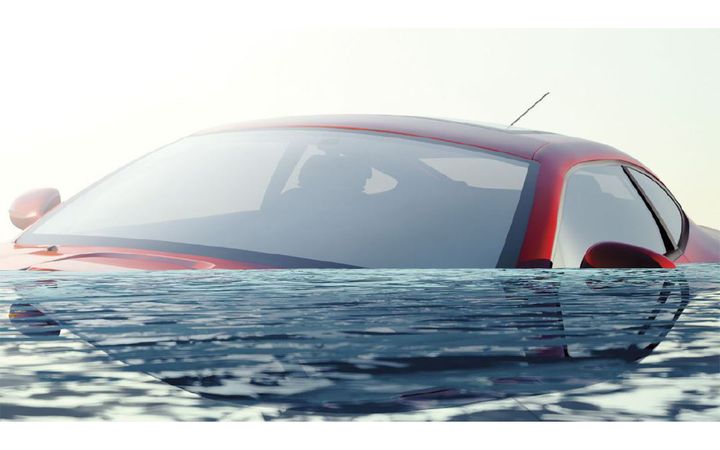Buyer Beware

Dealers must be on the lookout for vehicles damaged in Hurricane Ida as they resurface across the country.
IMAGE: Getty Images
Consumers and car dealers must be on alert for flood-damaged vehicles resurfacing on the used car market, reports Kirsten Von Busch, director of product marketing with Experian Automotive.
Von Busch notes there were approximately 1.4 million vehicles registered along the Gulf Coast. “Within that registration area, they estimate the Hurricane Ida storm surge hit three feet or higher,” she says. “And that doesn’t include East Coast flooding. The storm also affected an extensive number of vehicles on dealer lots.”
CARFAX data affirms this. It shows widespread flooding from Hurricane Ida on the East Coast potentially damaged over 212,000 vehicles. CARFAX adds these figures to the 378,000 flood-damaged cars its data shows were already on the road in 2021.
Von Busch stresses owners may have evacuated potentially affected vehicles before the storm. But, she adds, the numbers paint a clear picture of how many affected vehicles might exist. “In the coming months, some of those vehicles may re-enter the used vehicle market,” she says. “It’s important for dealers and used car shoppers to leverage resources, such as vehicle history reports, to make safe vehicle choices.”
Selling a flood-damaged vehicle carries a few risks. “At the smallest level, it will damage the loyalty of the consumer who bought the vehicle,” she says. “But at a greater level, selling tainted vehicles can affect the dealer’s brand and reputation in the marketplace.”
Affects All Geographies
Flood-affected vehicles do not just stay in the geographic area affected by the storm. “They will not only re-enter the immediate area but can show up anywhere across the country,” Von Busch says.
Vehicles may move across the U.S. as owners with flood-damaged vehicles attempt to sell them outside the affected area. “It’s kind of an out-of-sight, out-of-mind strategy,” she says. “If they move a vehicle outside the immediate area, and try to sell in Chicago, for example, the new buyer may not think about flood damage.”
Then, as buyers trade in these damaged vehicles, dealers may unknowingly receive them. “As dealers look to restock their inventories and face record lows for available inventory, they could be susceptible to receiving damaged vehicles,” she says.
“Our data suggests that unsuspecting buyers everywhere are at risk of winding up with a previously flooded car,” Chris Basso, CARFAX spokesperson, affirmed in a statement. “The real danger is these cars may look fine and run well for a while, but sooner rather than later, major problems are likely to occur. Flooded cars literally rot from the inside out and the damage is often difficult for untrained eyes to detect.”
There are three common reasons a seller may not inform buyers of water damage:
- They may not be the original owner and don’t know about the damage.
- They are aware of water damage and are hiding it.
- The vehicle lacked insurance before the damage, and water damage wasn’t disclosed after repairs.
Check Vehicle History Reports
It’s essential to get a detailed vehicle history report from a reputable source to check for title issues related to water damage, according to Von Busch.
“Leveraging a vehicle history report is a great way to identify any reported records that might suggest potential flood damage or vehicle history concerns,” she says. “Insurance claims updates, title information, state title brand, auction flood announcements, or salvage auction notations might be indications,” she says. “But some title brands are not updated prior to a vehicle changing hands.”
“However, dealers should not interpret a ‘yes’ report, affirming that the vehicle was in a FEMA-declared major disaster area, as absolute confirmation of flood damage. They also should not interpret a report of ‘possible’ flood damage as confirmation as flood damage,” she says. “It’s just information that tells you to take a closer look. Maybe the owner evacuated in the vehicle before the storm. Or maybe their child has it at college out of state.”
Inspect the Vehicle
Dealers also must be on the lookout for telltale signs that point to flood damage in used vehicles, adds Von Busch. They may notice a mildew or musty smell upon a physical inspection and other signs.
“We recommend pulling carpet back and looking for waterlines or water damage,” she says. “A couple specific areas to check are the trunk, luggage compartment, and under the dashboard, and to look for signs of corrosion.”
Search these areas for loose, stained or mismatched upholstery or carpeting; damp carpets; dried mud or silt in glove compartments and under seats; brittle wires; and fog or moisture beads in interior lights, exterior lights, or on the instrument panel. Also check for rust around doors, under the dashboard, on pedals, inside the hood, and in trunk latches.
Water is the enemy of vehicles and can damage their electrical systems, engines, and cause seizing of mechanical parts like wheel bearings. Water damage also reduces a vehicle’s reliability and shortens its life expectancy. It’s important to have a mechanic examine used vehicles before purchase to identify hidden issues.
“One challenge with flooding, or any vehicle history, is that it may not have been reported,” Von Busch says. “Flooding can be difficult to spot from a physical damage perspective, so we always recommend having a licensed mechanic inspect the vehicle.”
Flood damaged vehicles won’t stay in place—they will end up all over the country, from California to Texas, and Washington to New York. Owners also may knowingly or unknowingly hide this damage when they sell. Dealers that do their due diligence protect themselves and their customers from acquiring these damaged vehicles.

